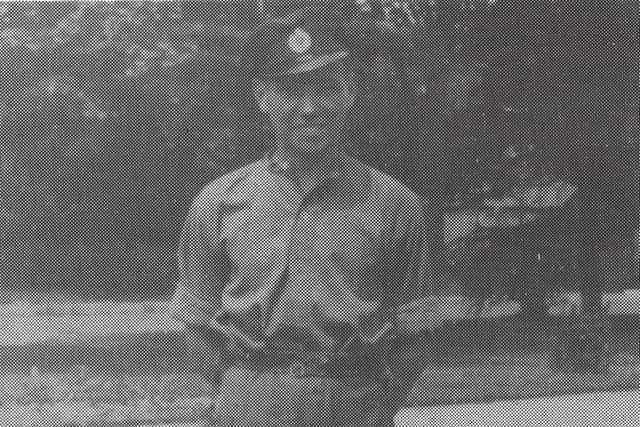What my father did in the war: How one Fifer's father helped to drive the Allies advance with steam power
and live on Freeview channel 276
Graham, who is also an Armed Forces Veteran, lived in Glenrothes before following in his father's footsteps by joining the Army himself and has shared his father’s experience in one of the darkest times in British history.
Charles Meacher, was born in Dalmeny, West Lothian, in 1920 and lived and worked in Edinburgh for many years before moving to Glenrothes in 1963 when he was promoted in his job with the railway.
Advertisement
Hide AdAdvertisement
Hide AdGraham said: “My Father, Charles Meacher, volunteered for war service in 1941 and joined the Royal Engineers, being allocated the regimental number 1940775, which was to become as familiar to him as the name he had lived with for 20 years.


“The relaxed routine of civilian railway shift work gave way to Army discipline, the closeness of family and friends was displaced by the loneliness of a rookie in a strange environment.


“After training at No. 2 Railway Training Centre in Derby and home of the Melbourne Military Railway, Charles was one of seven men sent to Cairnryan in his native Scotland as the nucleus of 931 Port Construction and Repair Company RE.
“Their mission was to build a great military port to provide extra capacity and act as a backup in the event of other docks being destroyed by enemy action, a similar military port was constructed by the sappers, and pioneers, at Gareloch on the Clyde.”
Advertisement
Hide AdAdvertisement
Hide AdCharles’ work in Scotland was soon to come to an end as he was posted to the South of England which was under constant bombardment from the Luftwaffe.
“From the relative peace of Wigtownshire he was posted to Eastbourne, the death-trap of the south in those days owing to the incessant hit-and-run German air attacks,” Graham adds.
“His top-secret task there was to help built the Mulberry harbours for the D-Day invasion to come. From there he was posted to the bleak moors of Hampshire and the Longmoor Military Railway (No. 1 Railway Training Centre), where over the years thousands of sappers trained to operate railways – and destroy them.
“His home postings came to an end when he was shipped to North Africa as a railway locomotive driver (his civilian reserved occupation). From there he went on to Italy as part of the Allies’ advance against the Axis powers. It was at Udine where he finally said goodbye to war-torn Italy and military railways.
Advertisement
Hide AdAdvertisement
Hide Ad“In 1946 my father returned to Scotland and employment with the London and North Eastern Railway at St Margaret’s depot in Edinburgh, a condition of his release when he volunteered to be a sapper.
“Three of his four sons followed his footsteps into the Royal Engineers, including me, with one of my brothers opting for a career on the railway.
"My father died in 2002 aged 82, having written four autobiographical books, the second of which, ‘Steam Sapper’, covered his time in the Royal Engineers during the war.”
Thank you for reading this article on our free-to-read website. We're more reliant on your support than ever as the shift in consumer habits brought about by coronavirus impacts our advertisers.
Please consider purchasing a subscription to our print newspaper to help fund our trusted, fact-checked journalism.
Comment Guidelines
National World encourages reader discussion on our stories. User feedback, insights and back-and-forth exchanges add a rich layer of context to reporting. Please review our Community Guidelines before commenting.